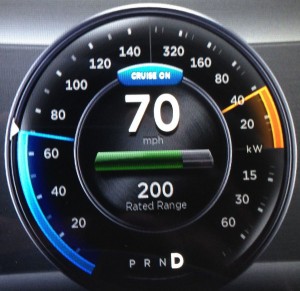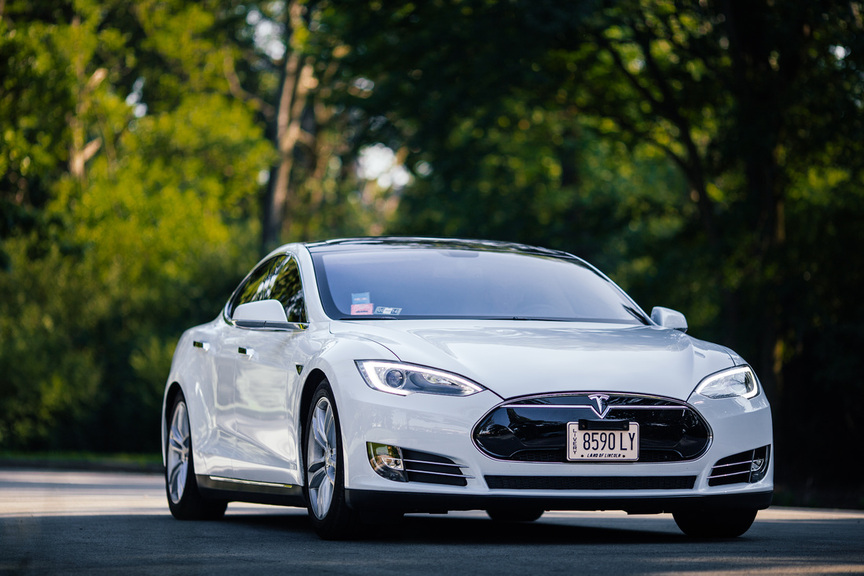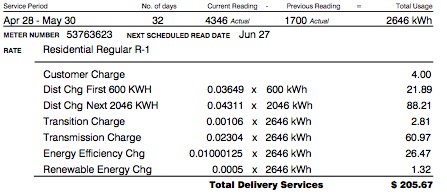Lifestyle
EV Basics – What’s a kilowatt hour?
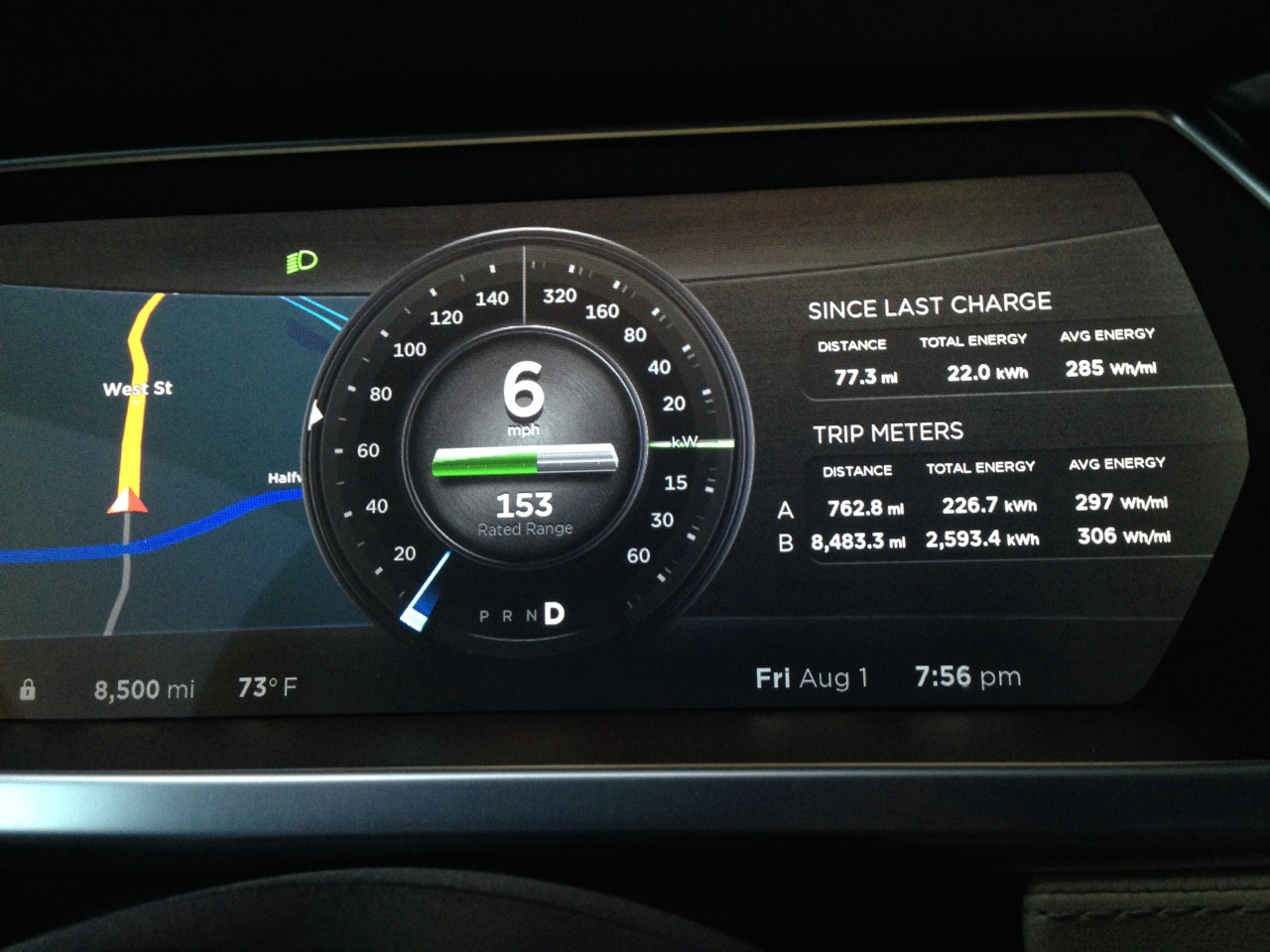
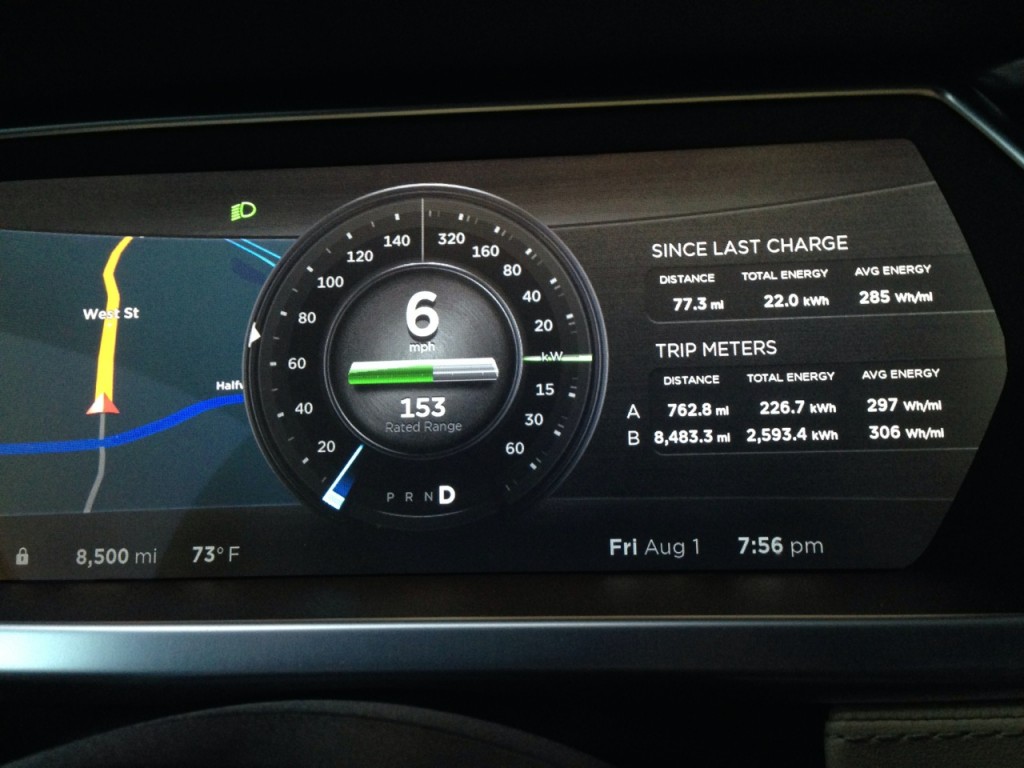
So what’s a kilowatt hour or shall we ask Watts a Kilowatt hour?
As more car buyers take the plunge into owning an electric vehicle (EV), it’s important to educate on the EV specific units of measure which differ greatly than your traditional gas burning vehicle. What is a kilowatt hour? How does it differ from a kilowatt? And why does this even matter?
Background
First, let me preface everything by saying that much of what I’m about to write is based on US specific units of measure since that’s what I’m familiar with. For instance, miles vs km and US dollars versus Euros. I’m also over simplifying and breaking things down to basic laymen terms so please cut me some slack if you already know all this!
If you receive a utility bill for your residence then you should probably be somewhat familiar with, or have heard of, a kilowatt (kW) and kilowatt hours (kWh) since that’s what electricity bills are measured on. Your EV is no different and uses these same units of measure although it’s probably something you haven’t paid much attention to in the past.
kW and kWh Units
Depending on the EV display you may see watt hours (Wh) or kilowatt hours (kWh) in some places and watts (W) and kilowatts (kW) in others. The kilo or k is a standard prefix meaning a thousand. So 1 kWh is 1,000 Wh. If you own your EV long enough you may just get to the next level, megawatt hour (MWh) which would be one million Wh!
Now for the fundamental definitions:
kW is a measurement of power and kWh is a measurement of energy.
Energy is the amount of work that can be performed. kWh, calories, joules are all units of energy. A slice of pizza has 285 calories which is 0.33 Wh of energy that can be derived from that substance. Energy can be converted and change in form. For instance we can convert that slice of pizza to heat by setting it on fire. The fuel is the pizza, but don’t try converting it in your EV!
Power is the rate at which energy is generated or used. kW is a unit of power. When you accelerate in your EV you’re using power and when you decelerate with regenerative braking you’re generating power. The Model S dedicates half the speedometer display to the unit of power on the right side. There you can see how many kW you are using (indicator is orange) or generating (indicator is green) at any instance in time. It’s great to be able to see this however you can’t easily convert this into a cost. In order to do that, you’ll need to measure it over time and convert it into a unit of energy.
Power is similar to your speed. 50mph is your speed, but you have to maintain that for an hour to travel 50 miles. Similarly, 40kW is how much power you’re using and you’ll have to maintain that consumption for one hour to use 40kWh. If you spend half that hour at 40kW and the other half at 20kW you’ll end up consuming 30kWh. Power usage is constantly changing and will depend on driving habit as well as usage of onboard amenities such as your seat heaters or A/C unit.
A 100W incandescent light bulb used over 1 hour will consume 100Wh of energy. If you use that 100W bulb for 8 hours every day, it will consume 800W or 0.8 kWh per day. After 30 days, it will have consumed 0.8kWh x 30 = 24 kWh. After 365 days it will have consumed 292 kWh. Measuring your EV is done in a similar fashion but keep in mind that an EV can both use and generate power (regenerative braking) over periods of time. The difference or net power used (used – generated) is what you see reported on your EV display.
Units for Charging
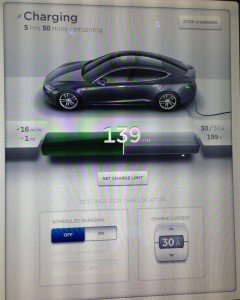 Charging your EV you transfers energy back into your battery so you’re effectively storing kWh for later use. EVs report charging in different ways but the most common is to report by kW and kWh added. So a charge rate of 6 kW is storing 6kWh for every hour of charge. If you’re charging at 6kWh and charge for 2 hours you’ll have an extra 12kWh added at the end of your charge.
Charging your EV you transfers energy back into your battery so you’re effectively storing kWh for later use. EVs report charging in different ways but the most common is to report by kW and kWh added. So a charge rate of 6 kW is storing 6kWh for every hour of charge. If you’re charging at 6kWh and charge for 2 hours you’ll have an extra 12kWh added at the end of your charge.
When it comes to driving, we’re trained to think in terms of miles, but not all miles travelled are the same when it comes to energy usage since there are variations in terrain and elevations. Weather also plays a factor for each mile travelled. A kWh stored, on the other hand, is always the same. The main difference is how you use that kWh.
The Model S offers the option to display charge rate by kW and kWh or by miles. Not surprisingly most Tesla owners choose to display charge rate in terms of miles. However it’s important to note that there’s a huge assumption being made about how many miles you can drive on a Wh and that assumption needs to account for charging efficiency. Tesla uses their proprietary algorithm to compute this value.
On Tesla’s online calculator they assume 300Wh/mile average use and a 90% charging efficiency. My own measurements show the average Wh/mile usage to be a bit higher (306 lifetime average) and the charging efficiency to be slightly less (81% last month).
What about Volts vs Amps?
Now you may be wondering how all this relates to volts and amps. This gets us back to the basics. One can calculate watts by multiplying volts with amps. W = V x A. So if you’re at a public charger and it’s charging at 199V and 30A (reference picture above), you’re essentially charging at 199V x 30A = 5,970W or about 6kW. This equates to 6kWh added after an hour of charging, but as we all know this is based on an ideal world where it charges at 100% efficiency with no loss. At 199V and 30A, the Model S is reporting this as a rate of 16 mi/hr.
Lets check that math:
5,970W/300Wh/mile standard assumption = theoretical 20 miles/hr charge rate. But that doesn’t account for charging efficiency. The Model S is reporting 16 mi/hr so its assuming an 80% charging efficiency (16/20) under these conditions.
Cost
Utility bills price per kWh. Your electric company may break it down by distribution vs generation, time of use, etc. and then associate a different cost per kWh on each pricing tier. It seems complex but you can simplify this.
To figure out your total cost per kWh just take your total amount of the bill and divide it by your total energy usage for the same period. That may include the various service fees, taxes, etc. but in the end you’re paying the electric company that total amount for those kWh regardless of what it’s derived from. Knowing this will help you calculate the costs for your road trips based on the kWh used.
Summary
Lifestyle
Tesla Model S Plaid battles China’s 1500 hp monster Nurburgring monster, with surprising results
There is just something about Tesla’s tuning and refinement that makes raw specs seem not as game-changing.

The Tesla Model S Plaid has been around for some time. Today, it is no longer the world’s quickest four-door electric sedan, nor is it the most powerful. As per a recent video from motoring YouTube channel Carwow, however, it seems like the Model S Plaid is still more than a match for some of its newer and more powerful rivals.
The monster from China
The Xiaomi SU7 Ultra is nothing short of a monster. Just like the Model S Plaid, it features three motors. It also has 1,548 hp and 1,770 Nm of torque. It’s All Wheel Drive and weighs a hefty 2,360 kg. The vehicle, which costs just about the equivalent of £55,000, has been recorded setting an insane 7:04.957 at the Nurburgring, surpassing the previous record held by the Porsche Taycan Turbo GT.
For all intents and purposes, the Model S Plaid looked outgunned in Carwow’s test. The Model S Plaid is no slouch with its three motors that produce 1,020 hp and 1,420 Nm of torque. It’s also a bit lighter at 2,190 kg despite its larger size. However, as the Carwow host pointed out, the Model S Plaid holds a 7:25.231 record in the Nurburgring. Compared to the Xiaomi SU7 Ultra’s record, the Model S Plaid’s lap time is notably slower.
Real-world tests
As could be seen in Carwow’s drag races, however, Tesla’s tech wizardry with the Model S Plaid is still hard to beat. The two vehicles competed in nine races, and the older Model S Plaid actually beat its newer, more powerful counterpart from China several times. At one point in the race, the Xiaomi SU7 Ultra hit its power limit due to its battery’s temperature, but the Model S Plaid was still going strong.
The Model S Plaid was first teased five years ago, in September 2020 during Tesla’s Battery Day. Since then, cars like the Lucid Air Sapphire and the Xiaomi SU7 Ultra have been released, surpassing its specs. But just like the Model Y ended up being the better all-rounder compared to the BYD Sealion 7 and the MG IM6, there is just something about Tesla’s tuning and refinement that makes raw specs seem not as game-changing.
Check out Carwow’s Model S Plaid vs Xiaomi SU7 drag race video below.
Lifestyle
500-mile test proves why Tesla Model Y still humiliates rivals in Europe
On paper, the BYD Sealion 7 and MG IM6 promised standout capabilities against the Model Y.

BYD is seeing a lot of momentum in Europe, so much so that mainstream media has taken every opportunity to argue that the Chinese automaker has beaten Tesla in the region. But while BYD sales this year in Europe are rising and Tesla’s registrations remain challenged, the raw capabilities of vehicles like the Model Y are difficult to deny.
This was highlighted in a 500-mile challenge by What Car? magazine, which showed that the new Tesla Model Y is more efficient, cheaper to run, and more reliable than rivals like the BYD Sealion 7, and even the nearly 400 KW-charging MG IM6.
Range and charging promises
On paper, the BYD Sealion 7 and MG IM6 promised standout capabilities against the Model Y. The Sealion 7 had more estimated range and the IM6 promised significantly faster charging. When faced with real-world conditions, however, it was still the Model Y that proved superior.
During the 500-mile test, the BYD nearly failed to reach a charging stop, arriving with less range than its display projected, as noted in a CarUp report. MG fared better, but its charging speeds never reached its promised nearly-400 kW charging speed. Tesla’s Model Y, by comparison, managed energy calculations precisely and arrived at each stop without issue.
Tesla leads in areas that matter
Charging times from 25% to 80% showed that the MG was the fastest at 17 minutes, while Tesla and BYD were close at 28 and 29 minutes, respectively. Overall efficiency and cost told a different story, however. The Model Y consumed 19.4 kWh per 100 km, compared to 22.2 for MG and 23.9 for BYD. Over the full trip, Tesla’s charging costs totaled just £82 thanks to its supercharger network, far below BYD’s £130 and MG’s £119.
What Car? Magazine’s testers concluded that despite BYD’s rapid sales growth and the MG IM6’s seriously impressive charging speeds, Tesla remains the more compelling real-world choice. The Model Y just offers stability, efficiency, and a proven charging infrastructure through its Supercharging network. And as per the magazine’s hosts, the Model Y is even the cheapest car to own among the three that were tested.
Watch What Car? Magazine’s 500-mile test in the video below.
Lifestyle
Tesla Cybertruck slapped with world’s least intimidating ticket, and it’s pure cringe
One cannot help but cringe and feel second-hand embarrassment at the idea of a person just driving around with a stack of these babies.

A Cybertruck parked at Stanford Shopping Center in California was recently hit with what might be the most try-hard piece of paper ever slipped under a wiper blade: a “fake citation” accusing the driver of supporting a “fascist car.”
The note, shared on X by Tesla staff program manager Ryan Torres, quickly made the rounds on X, where it quickly gained attention as an example of how not to protest.
The world’s least intimidating ticket
According to the citation, the supposed “violation” was “driving a fascist car.” The remedial action? Take the bus, call an Uber, or ride a bike. The note also dubbed Elon Musk a “chainsaw-wielding Nazi billionaire.” Now, protests against Tesla and Elon Musk have become commonplace this year, but one cannot help but cringe and feel second-hand embarrassment at the idea of a person just driving around with a stack of fake anti-Tesla/Musk citations.
Torres pointed out the irony himself in his post on X. Tesla currently employs over 140,000 Americans, and SpaceX has put the U.S. firmly back at the top of space technology. As Torres put it, maybe the person behind the world’s least intimidating ticket should “read a book on innovation before vandalizing” other people’s property.
Peak performative clownery
Not to mention that the fake ticket’s logic collapses under its own weight. EVs like the Cybertruck are literally designed to reduce emissions, not “destroy the economy.” If anything, Tesla has bolstered the United States’ economy by fueling jobs in engineering, manufacturing, and clean energy. It’s not the first time a Tesla has been the target of vandalism or politically charged notes, but this one stands out for sheer cringe value.
Torres summed it up neatly: “Peak clownery.” On that point, at least, the citation earns full marks. In a way, though, perhaps cringe fake tickets are not as bad as the literal firebombs that were being thrown at Tesla stores and cars earlier this year because some critics were gleefully misinformed about Elon Musk.


